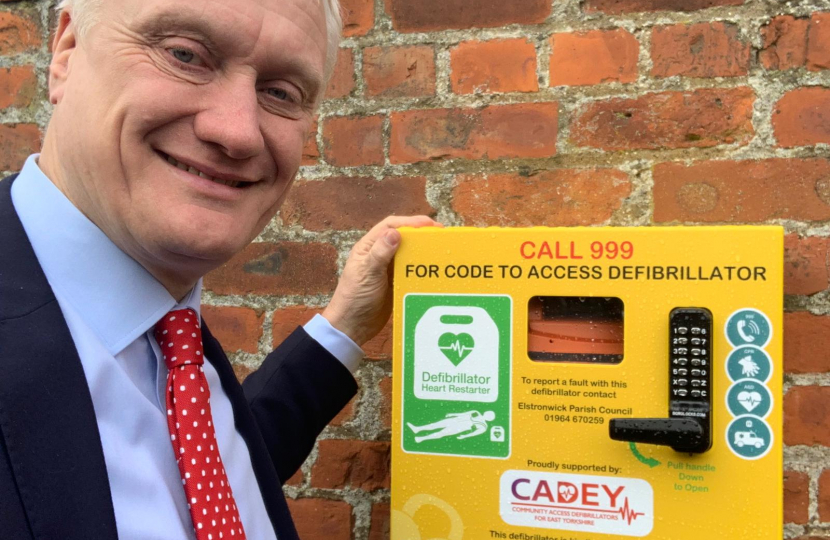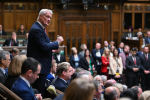
Graham Stuart, MP for Beverley and Holderness has asked residents of thirteen rural communities in Beverley and Holderness where a life-saving defibrillator could be installed, as part of his CADEY (Community Access Defibrillators for East Yorkshire) campaign.
Graham’s CADEY Committee made up of Yorkshire Ambulance Service, Help For Health, HEY Smile Foundation, charity fundraiser Jordan Moor, community activist Paul Downey, HFR Solutions and Humber Aid set out to put a publicly accessible defibrillator in every rural community in Beverley and Holderness.
Starting with a list of over 60 communities, the CADEY campaign has got to a final list of 13 communities which are between 2.2 and 0.8 miles from the closest defibrillator.
The remaining communities are Meaux, Swine, Arram, Burton Constable, Winestead, East Newton, Waxholme, Hilston, Scorborough, Weeton, Rolston, Wyton and Nunkeeling.
Residents can let Graham know at www.grahamstuart.com/CADEY.
Defibrillators, sometimes also called AEDs or PADs, are a vital tool in saving the lives of those who suffer cardiac arrests. They are most effective in the first minutes. Most cardiac arrests take place outside hospitals and the shocking statistic is that in less than 10% of cases does the patient survive.
Lives can be saved if we can get a defibrillator onto the patient within the first three to five minutes, when survival rates rise to between 50% and 70%. Without a defibrillator, survival rates are very slim indeed.
A publicly accessible defibrillator can be installed anywhere with a wall and a power supply. It could be a pub, a church or a roadside wall of a house. The closer the nearest defibrillator is to a community, the higher the chance that someone suffering a cardiac arrest can be saved.
Commenting, Graham said, “A cardiac arrest could hit you anywhere – at home, out cycling, or at work.
“That’s why it’s so important to have a defibrillator in every community. All it needs is a wall with a power supply, with public access.
“So I’m asking everyone in the last few communities if they have such a wall or know of one. If they do, it could save a life.”

